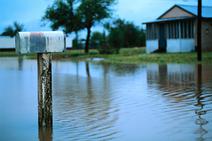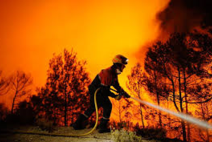Emergency Planning
Emergency Management
How to make an emergency plan
An emergency action plan can reduce the impact of an emergency situation. Making a plan will ensure that you and your family members know what to do and who to call.
Tips to get you started
- Reduce hazards in your home and have an evacuation plan.
- Sit down with your family and discuss what to do during an emergency. Where would you go? What would you need? Where would we meet?
- If you have children, make sure they know when to call 9-1-1.
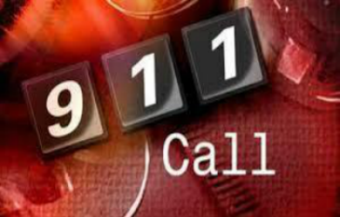
Have a family reunion plan.
Shelter-in-place
- Designate a common meeting place outside your community. Everyone should check in with an out-of-town friend or relative. Though phone landlines and mobile net works may be overloaded, often a text message will go through.
- Ensure that you have a place to stay in case you are evacuated from your home. You should have a friend or relative in your city who can help you and your family in an emergency and at least one out-of-town friend or relative who would also be willing. Keep the contact information for these friends or relatives in your 72-hour kit.
- Make a 72-hour emergency preparedness kit. Include copies of important documents and emergency contacts. Store more copies in a second location, such as at work or in your vehicle.
You may be instructed to “shelter-in-place” if chemical, biological or radiological contaminants are released into the environment. This means you must remain inside your home or office and protect yourself there. The following steps will help maximize your protection:
Close and lock all windows and exterior doors.
Turn off all fans, heating and air-conditioning systems to avoid drawing in air from the outside.
Close the fireplace damper.
Get your 72-hour emergency kit and make sure the radio is working.
Go to an interior room that’s above ground level (if possible, one without windows). In the case of a chemical threat, an above-ground location is preferable because some chemicals are heavier than air and may seep into basements even if the windows are closed.
Using duct or other wide tape, seal all cracks around the door and any vents into the room.
Continue to monitor your radio or television until you are told all is safe or are advised to evacuate.
If you are in a house during a Tornado:
- Go to the basement or take shelter in a small interior ground floor room, such as a bathroom, closet or hallway.
- If you have no basement, protect yourself by taking shelter under a heavy table or desk.
- In all cases, stay away from windows, outside walls and doors.
If you are in an office or apartment building:
- Take shelter in an inner hallway or room, ideally in the basement or on the ground floor.
- Do not use the elevator.
- Stay away from the windows.
If you are in a gymnasium, church or auditorium:
- Large building with wide-span roofs may collapse if a tornado hits. If possible, find shelter in another building.
- If you are in one of these buildings and cannot leave, take cover under a sturdy structure, such as a table or desk.
Know the Risks
Emergency situations often occur without warning. In addition to making an emergency plan and a 72_Hour Kit, you can lessen the impact of an emergency situation by knowing what to do before an emergency or disaster strikes.
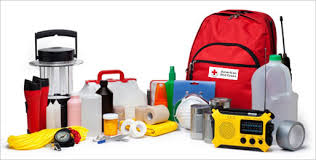

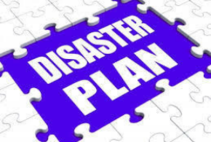
Prepare Your Family
Emergency Equipment for your Vehicle
Make sure your car or truck is equipped with emergency supplies. Follow this handy checklist for setting up your car or truck emergency kit:
- Blanket
- Booster Cables
- Extra clothing and footwear
- Fire extinguisher
- First-aid kit with first aid manual
- Flashlight and batteries
- Gas line antifreeze
- Matches and a candle in a tin can to warm hands, heat a drink or use as an emergency light
- Non-perishable high-energy foods such as raisin, nuts and granola bars
- Kitty litter for traction. Sand can also be picked up at designated fire halls
- Shovel
- Solar, wind-up or battery radio
- Tool kit
- Bottled water
- Warning light and reflectors
Here are some important links to help you prepare for emergencies:
Get a Kit
72-Hour Emergency Kit
No one knows for sure when disaster will strike, but we can be prepared. Create your own 72-hour kit, and you will have the necessary items to help you and your family until emergency responder can reach you. Below are items you may want to include in your kit.- Food and Water (3-day supply of non-perishables per person required)
- protein/granola bars
- trail mix/dried fruit
- crackers and cereals
- canned meat, fish and
- beans
- canned juice
- water (4 L per person, include small bottles to carry with you.)
Bedding and Clothing
- change of clothing (short and long-sleeve shirts, pants, socks, undergarments)
- raincoat/emergency poncho/jacket
- spare shoes
- sleeping bags/blankets/emergency heat blankets per person
- plastic and cloth sheets
Light and Fuel
- hand-crank flashlight or battery-operated flashlights/lamps
- extra batteries
- flares
- candles
- lighter
- waterproof matches
Equipment
- manual can opener
- dishes and utensils
- shovel
- radio (with spare batteries/hand operated crank)
- pen and paper
- axe/pocket knife
- rope
- duct tape
- whistle
- cellphone charger
- basic tools
- small stove with fuel (follow manufacturer’s directions for operation and storage)
Personal Supplies and Medication
- first-aid kit
- toiletries (toilet paper, feminine hygiene, toothbrush)
- cleaning supplies (hand sanitizer, dish soap, etc.)
- medication (acetaminophen, ibuprofen, children’s medication, etc., and 3-day supply of prescription medication)
- pet food and supplies
- garbage bags
- toys/reading material
Copies of Personal Documents, Money (in waterproof container)
- legal documents (birth certificates, wills, passports, contracts)
- insurance policies
- cash in small bills
- credit card(s)
- prepaid phone cards
- copy of your emergency plan and contact information
Ready-to-go Kit
Keep ready-to-go kit items in a backpack, duffle bag or suitcase, in an accessible place, such as a front-hall closet. Make sure your kit is easy to carry and everyone in the house knows where it is. Take it with you if you have to leave your house so you can be safe.- 4 L of water for each person
- food that you don’t have to keep cold manual can opener
- plastic/paper plates, cups, knives, forks, spoons
- flashlight and extra batteries
- change of clothes
- card with emergency contact information and the number of someone to call who lives out of town
- pet food and supplies for a least 3 days
- small first aid kit
- personal ID card
- personal hygiene items, soap, hand sanitizer
Store medicine you usually take near your ready-to-go kit.
Important Notes
- Update your kits every six months (put a note in your calendar/planner to make sure that food, water and medication are not expires, clothing fits, personal documents and credit cards are up to date and batteries are charged.
- Small toys/games are important; they can provide some comfort and entertainment during a stressful time.
- Some items and/or flavours might leak, melt, or break open. Dividing groups of items into individual Ziploc bags might prevent this.
Emergency Management
Whether it is floods, fires, or influenza, emergencies can happen anytime, anywhere. It’s not always possible to avoid these emergencies, but you can be prepared.
Personal Preparedness
Be equipped to support yourself and your family for up to 3 days after an emergency. Having an emergency plan and a 72-hour kit will help you manage until emergency responders can reach you and allows them to focus their efforts on those in immediate danger. You can also download the Alberta Emergency Alert app for iphone or Android devices to stay informed.
Public Safety Canada Brochures
There is a lot of information out there that can help you prepare for en emergency. Please take some time to read the links below.
For a summary of the above information, as well as some other useful information follow the link below. It is a handy guide to print and keep available in your home.
Alerts
Ebola Information for Public
There are many ways you can obtain information during an emergency or disaster. You can monitor local media through a television set or radio, you can check for alerts through social media and you can monitor the situation on various websites.
You can also receive Alberta emergency Alerts directly, so that you will be better informed about potential risks to your health, safety or community. You can do this easily by following this link:
Alberta Emergency Alerts
Alberta Emergency Alerts are issued to warn people about potential risks to their health and safety. By signing up to receive this information directly, you will be better informed and better prepared. You can follow Alberta Emergency Alert on Twitter @ AB_EmergAlert, download their app for iPhone or Android devices or visit their website for more information.
Prepare Your Community
Across Canada, we face a number of natural hazards, which can vary from region to region. Knowing what to do during an emergency is an important part of being prepared. Find out more about risks in your region and how to prepare by visiting, GetPrepared.ca. Then use the guide for information on what to do in different situations.
During an Emergency
The following steps should be taken in emergency situations:
- Make sure you are safe before assisting others
Follow your emergency plan. - Get your emergency kit.
Monitor radio, television and online for information from authorities. Follow their instructions. - Stay put until it is safe or you are ordered to evacuate.
- Limit phone calls to urgent messages only. Keep the lines free for emergency responders.
Special Needs
This following information has been prepared by the Regional Director of Emergency Management from the Town/County of St. Paul; Town of Elk Point and the Summer Village of Horseshoe Bay.
For individuals with hearing or speech impairments you can register to use Text 9-1-1.
Emergency Preparedness for Individuals with Hearing Disabilities
High-rise Safety for Individuals with Special Needs/Disabilities
Mobility Limitations ERP Pamphlet
Non-Visible Disabilities ERP Pamphlet
Seniors with Special Needs ERP Pamphlet

